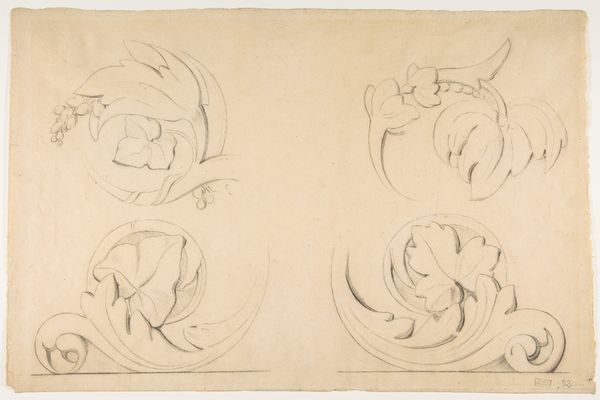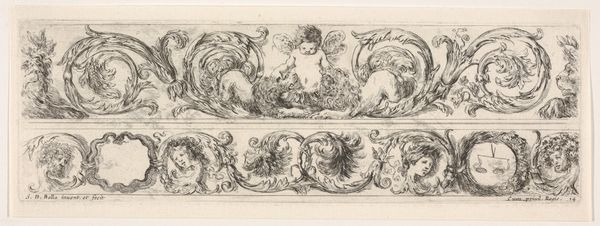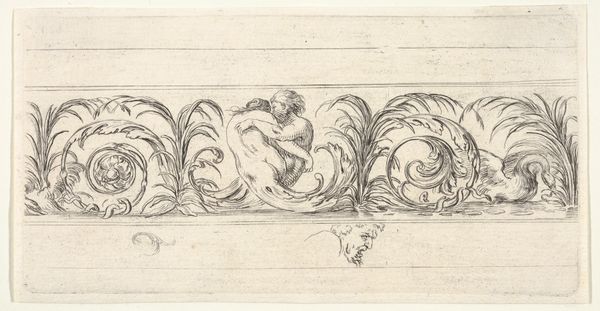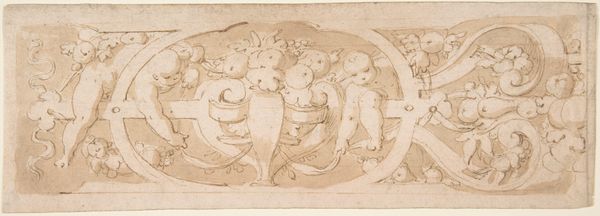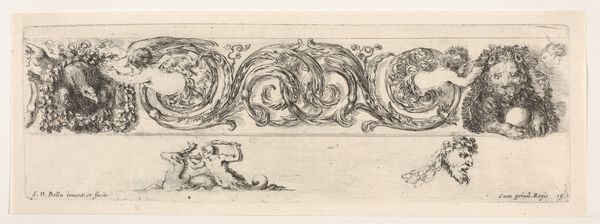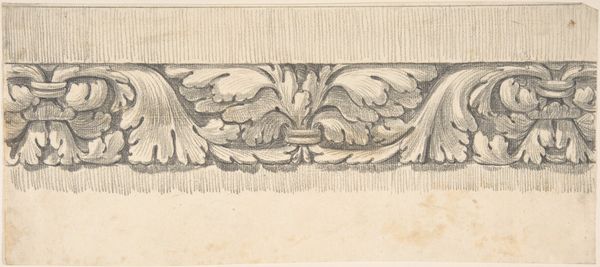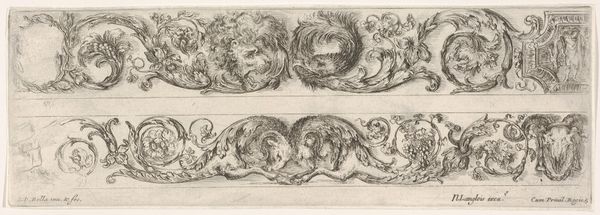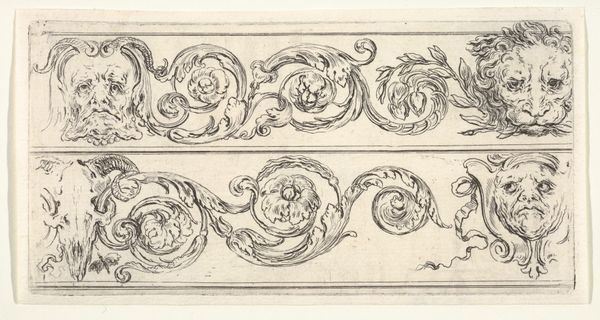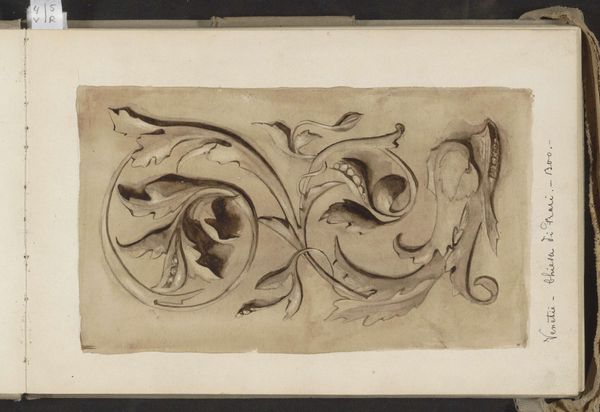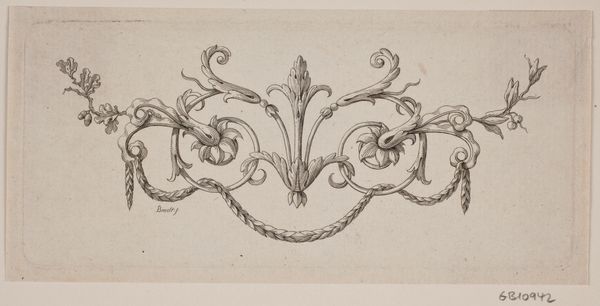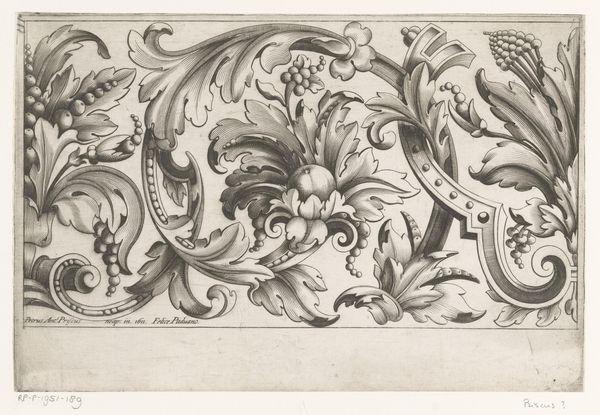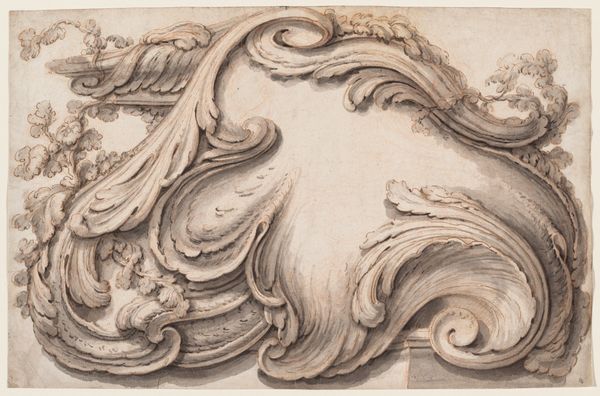
Dimensions: sheet: 9 x 18 in. (22.9 x 45.7 cm)
Copyright: Public Domain
Editor: We're looking at Thomas Pether's "Design for Frieze of Foliage," created in the 1770s. It's an ink drawing, very delicate and ornate. I’m struck by how balanced and almost symmetrical it is, yet the swirling forms give it a lively feel. What do you make of this design? Curator: Well, isn’t it a whispering symphony of forms? This piece vibrates with the echoes of grand estates and meticulous craft. Picture this as just one fragment of a larger design – maybe gracing the walls of some country estate! I am just curious - have you considered this in light of, say, interior decoration during that period? Editor: Not specifically, I hadn’t. I was just drawn to the flowing lines, which, now that you mention it, could very well fit in a baroque interior space. Curator: Exactly! See the controlled chaos, how the leaves and fronds embrace, creating drama within a disciplined framework? Consider also how such ornament reflects a belief in embellishment and refinement, practically a philosophy for those with the privilege to embrace it. Do you feel a sense of nature being tamed and presented? Editor: I think so. The composition definitely feels ordered and intentional, a far cry from the unruly growth of a real garden. Curator: And that's key! It isn't simply replication of nature, but an elevated representation of its essence through line and ink. And if the frieze was brought to life via paint it might create an immersive experience! The natural light playing against this design, the illusion of depth… What would the patrons discuss under such ornament I wonder? Editor: That's fascinating. I’m now envisioning it as part of an actual room. All those swirls, shadows and secrets. Thanks to that image and thought I definitely am walking away seeing much more than pretty leaves and curves. Curator: It’s a dance between intellect and inspiration, where art isn't merely observed but felt, eh? We see, learn, then allow our minds to flutter beyond the canvas, imagining not only its creation, but how and where such things would actually “live.”
Comments
No comments
Be the first to comment and join the conversation on the ultimate creative platform.
